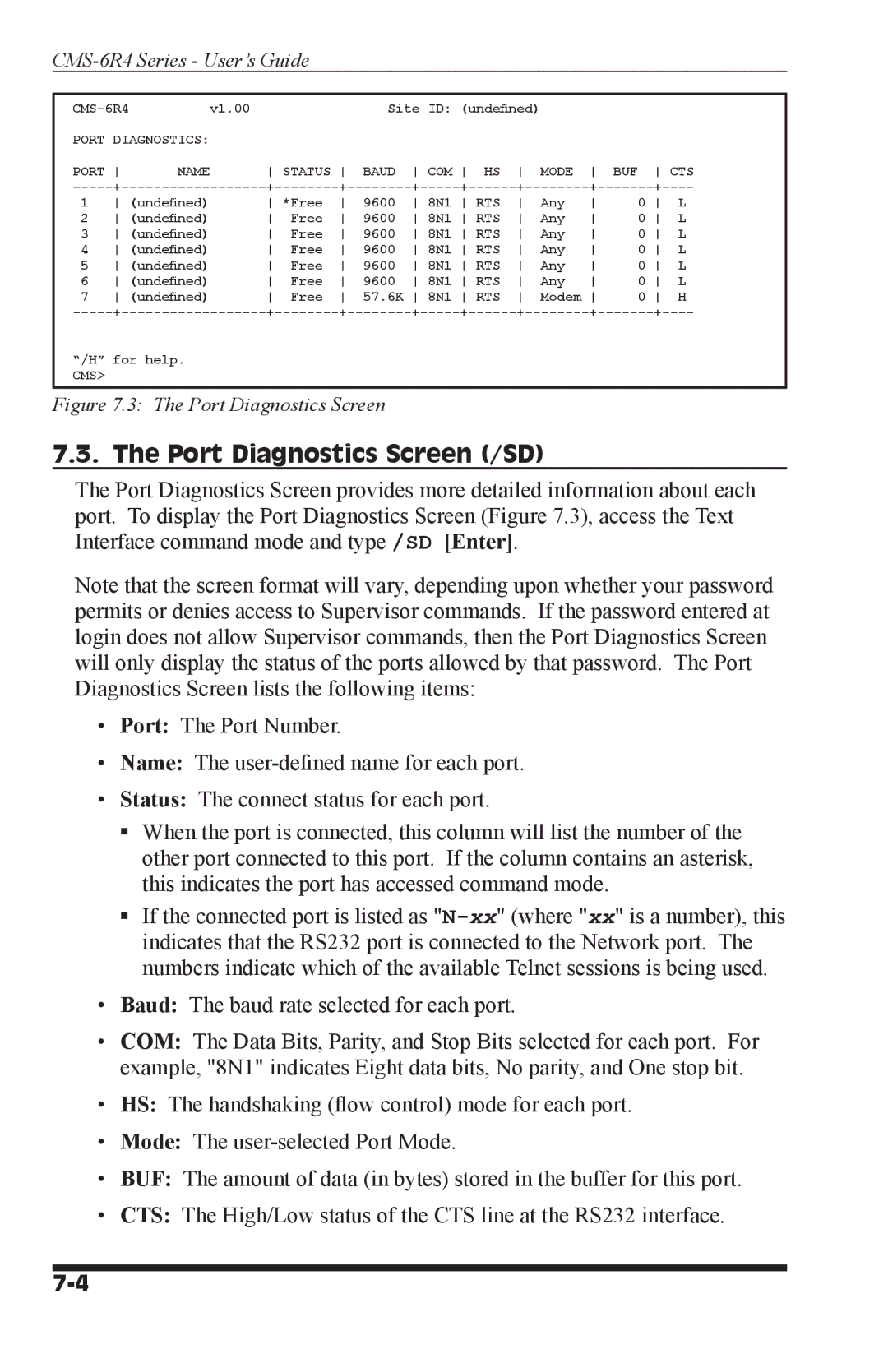
CMS-6R4 Series - User’s Guide
| v1.00 |
|
|
| Site ID: (undefined) |
|
|
|
|
| |||||
PORT | DIAGNOSTICS: |
|
|
|
|
|
|
|
|
|
|
|
|
| |
PORT | NAME | STATUS | BAUD | COM HS | MODE | BUF | CTS | ||||||||
9600 | 8N1 | Any | 0 | L | |||||||||||
1 | (undefined) | *Free | RTS | ||||||||||||
2 | (undefined) | Free | 9600 | 8N1 | RTS | Any | 0 | L | |||||||
3 | (undefined) | Free | 9600 | 8N1 | RTS | Any | 0 | L | |||||||
4 | (undefined) | Free | 9600 | 8N1 | RTS | Any | 0 | L | |||||||
5 | (undefined) | Free | 9600 | 8N1 | RTS | Any | 0 | L | |||||||
6 | (undefined) | Free | 9600 | 8N1 | RTS | Any | 0 | L | |||||||
7 | (undefined) | Free | 57.6K | 8N1 | RTS | Modem | 0 | H | |||||||
“/H” | for help. |
|
|
|
|
|
|
|
|
|
|
|
|
| |
CMS> |
|
|
|
|
|
|
|
|
|
|
|
|
|
|
|
Figure 7.3: The Port Diagnostics Screen
7.3. The Port Diagnostics Screen (/SD)
The Port Diagnostics Screen provides more detailed information about each port. To display the Port Diagnostics Screen (Figure 7.3), access the Text Interface command mode and type /SD [Enter].
Note that the screen format will vary, depending upon whether your password permits or denies access to Supervisor commands. If the password entered at login does not allow Supervisor commands, then the Port Diagnostics Screen will only display the status of the ports allowed by that password. The Port Diagnostics Screen lists the following items:
•Port: The Port Number.
•Name: The
•Status: The connect status for each port.
■When the port is connected, this column will list the number of the other port connected to this port. If the column contains an asterisk, this indicates the port has accessed command mode.
■If the connected port is listed as
•Baud: The baud rate selected for each port.
•COM: The Data Bits, Parity, and Stop Bits selected for each port. For example, "8N1" indicates Eight data bits, No parity, and One stop bit.
•HS: The handshaking (flow control) mode for each port.
•Mode: The
•BUF: The amount of data (in bytes) stored in the buffer for this port.
•CTS: The High/Low status of the CTS line at the RS232 interface.
